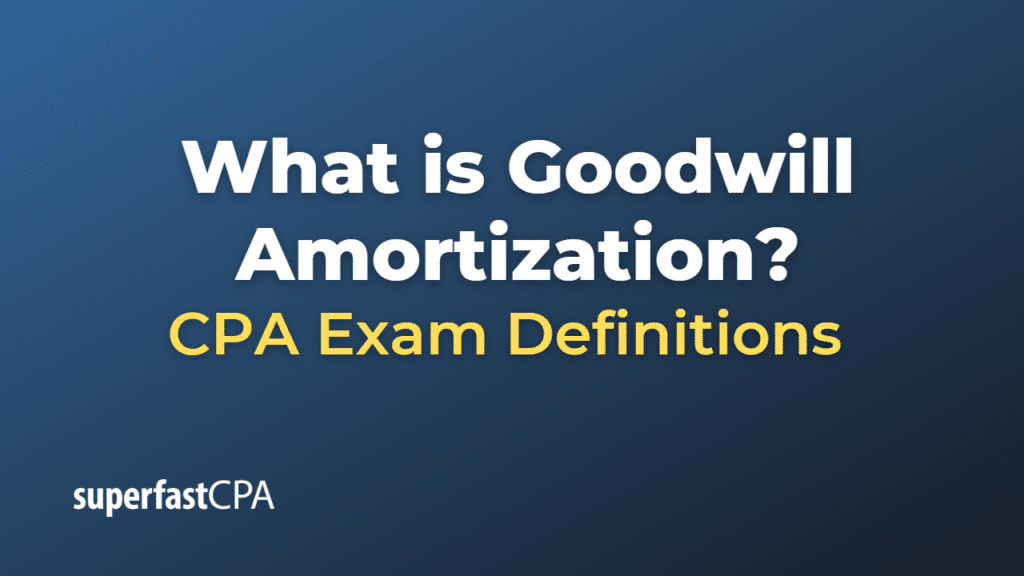Goodwill Amortization
Goodwill amortization is the systematic reduction of the recorded value of goodwill over a period of time. However, it’s important to note that under current U.S. and International Financial Reporting Standards (IFRS), which have been effective since 2001 and 2004 respectively, goodwill is not amortized.
Instead, both U.S. Generally Accepted Accounting Principles (GAAP) and IFRS require companies to test goodwill for impairment on an annual basis or more frequently if certain indications arise. In other words, companies need to evaluate whether the value of goodwill has decreased.
If a company’s goodwill is impaired, its carrying value (i.e., its value on the balance sheet) is reduced and an impairment loss is recognized in the income statement. The impairment test is generally based on a comparison of the carrying amount of the asset to the estimated future cash flows it’s expected to generate.
That being said, there are ongoing discussions in the accounting and business community about whether to return to amortizing goodwill, primarily because the impairment-only approach can sometimes lead to large, unexpected charges to the income statement.
Prior to these accounting standards changes, goodwill was indeed amortized, typically over a period of up to 40 years. This practice aimed to reflect the idea that the value of the acquired company’s intangible assets (like its reputation, customer relationships, etc.) would decrease over time. However, it was criticized for not necessarily reflecting economic reality, as the useful life and depreciation pattern of goodwill can be very hard to estimate. This was part of the motivation for the switch to the impairment-only approach.
Example of Goodwill Amortization
Let’s say Company A acquires Company B for $1,000,000. Company B’s net identifiable assets (assets – liabilities) at the time of the acquisition are valued at $800,000. The excess of the purchase price over the net identifiable assets is considered goodwill.
In this case, the goodwill is $1,000,000 (purchase price) – $800,000 (net identifiable assets) = $200,000.
If we were to amortize this goodwill over a hypothetical period of 10 years, the annual amortization expense would be $200,000 / 10 = $20,000. This would result in a $20,000 reduction in the carrying amount of goodwill on the balance sheet each year, as well as a $20,000 expense on the income statement.
It’s important to note again that this is not typically how goodwill is handled under current accounting standards. This is a hypothetical example intended for illustrative purposes only.













